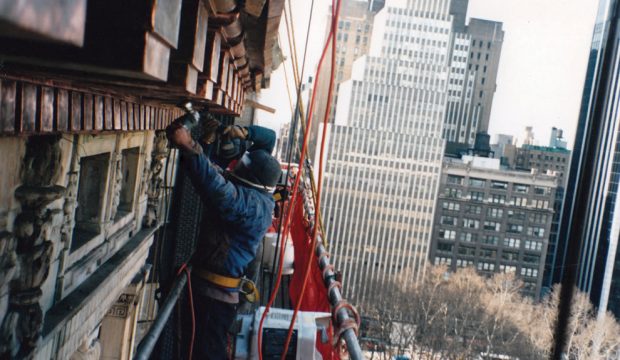
Widely renowned, New York‘s water towers continue to baffle many. Few ponder over their operational intricacies, the companies responsible for their inception, installation, and maintenance, and the reasons behind the affection New Yorkers harbor for them.
The water towers in New York stand out as one of the most iconic and indispensable features of the city’s landscape, evolving into a symbol of the urban environment itself. With time, they have transcended their utilitarian role.
READ: Sport in New York: A New Era in Women’s Basketball Footwear
To comprehend their role, it is crucial to understand that New York’s water originates from the upstate region. It flows downward, gaining ample velocity and pressure. By the time it reaches the city, it effortlessly ascends to a height corresponding to six stories, roughly ranging from 60 to 75 feet. However, should the need arise to elevate it further, the assistance of pumps and a water tower becomes indispensable. Hence, the symbiotic relationship between water towers and the city’s ambition to erect increasingly towering structures. Despite notable advancements in skyscraper construction technology, the unassuming water tower persists as the most effective means of water storage.

The traditional wooden water tower stands out for its remarkable simplicity: cedar wood planks, bound together by external steel hoops under pressure, require no glue, nails, or screws. Wood serves as a natural insulator, shielding water from freezing during winter, and proves superior to contemporary materials like concrete. Achieving comparable insulation with concrete would necessitate walls approximately two feet deep. These advantages elucidate the enduring appeal of water towers in New York City, boasting between 10,000 and 15,000 such tanks atop city rooftops.
READ: New York City Rental Benefits: Elder Care, Airbnb, and Alternative Contracts
The oldest water tower (or water tank) company in New York is the Rosenwach Tank Company, distinguished by its unique capabilities of wood cutting, fabrication, and assembly. Originating in 1866, barrel maker William Dalton established the company on New York’s Lower East Side. In 1896, the Rosenwachs acquired the business for $55.

Typically crafted from yellow cedar or California redwood, the materials for water tanks are becoming increasingly scarce and costly. The components of water towers are manufactured off-site and transported using ladders. Some towers are so sizable that they cannot fit into standard freight elevators. The vertical components, referred to as “studs,” are precisely shaped to seamlessly fit into the grooves of the wooden base of the water tower and secure to the top of the metal base.
READ: Investing in Dubai Villas May Become Irrelevant: Understanding the Situation and Revealing Myths
City fire codes mandate the presence of a water storage system on a building’s roof, whether in the form of a traditional wooden water tower or a metal tank. However, metal tanks come with their drawbacks, and the number of water towers installed varies depending on the size of the building, ranging from one to three.
Like us on Facebook for more stories like this: